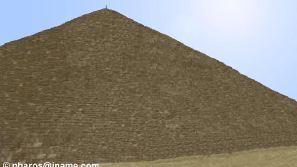
Antonino Saggio I Quaderni
Talks

Antonino Saggio I Quaderni
Talks
Spaces and Tools
Spaces that do not exist and we must formalize new syntax, new rules, new alphabets
Today, the need for creating a new alphabet is pressing. We have to create a space that still does not yet completely exist but one we begin to intuit and that can begin to shape.
Consider the wonderful metaphor of fish DDEK
offers us. Fish know only the fluid that, just like air, surrounds them.
They know nothing either of what the sea or lake or river really is and
know even less about the space in which we humans live. Only a jump beyond
that aquatic surface can open up the sensation of another space that definitely
exists, even if it is neither frequented nor understood.

Benoit Sokal "The Amerzone" Casterman ed.
Throughout history we have lived in different spaces and architects, using different alphabets, have given them form: informal space, gestural and primitive, pre-Miletus (or pre-alphabet as DDek calls it); the space arterialized by the Greeks and Romans; the sacred and mystic space before Giotto; that perspective space of the Renaissance; the industrial and mechanical, analytical and non-perspective space after Cézanne. Each new space on arriving has required new principles and new alphabets that have been created through difficult, exhausting, rough but exciting processes. Regarding the new information space, we can only begin to catch a glimpse of a few characteristics.









"Like dolphins that take in oxygen to jump from the sea and follow ships and see the outlines of islands and coasts, a few pioneers are working in an attempt to define the possibilities and principles of precisely this new space."
Benoit Sokal "The Amerzone" Casterman ed.
But How, Where?
Ledoux

Jobs Wozniak 1976ca

Francesco Coco
Inside The tool

The Space of the Tool is inside the tool "itSelf";
"We are accustomed to representing architecture already built. To designing (or measuring) the pyramids or a Renaissance palace to put back on paper something we know as a real object already existing in space. But have we ever asked ourselves the reverse? In other words, how and how much a real object might 'resemble' the method that its contemporaries had of representing it? Perhaps this question would reveal the fact that it is knowledge itself that is 'represented' in the architectural object. The basic rules of trigonometry are illustrated in the pyramids; a calculation based on geometry (and not the tiring Roman numerals I, II, III, IV) is at the basis of the Pantheon; the loss of geometrical-arithmetical ability is evident in the cavernous and unsteady interior of a Romanesque church; without the lines and rules of perspective there would be no 'ordered' Renaissance palace, and without the circles of a compass, the curves of San Carlino or Sant'Ivo would never have taken shape. Finally, if we 'also' consider the tool, we get a clue to understanding how certain senses of space were born.Now let us try to question our ideas of architecture 'together' with the tool we have with us. And let us ask ourselves, 'What if our architecture were to resemble even more the potential of our computerized models?' We would like the flexibility, intelligence, speed and, as we have said many times before, interactivity of our digital model to be the special quality of constructed architecture. A property not just of our computer screens but of our architecture, constructed exactly just as the measured, ordered and centered concept of perspective led to an architecture 'in its own likeness and image'. "
from
AS Preface to Bruce Lindsey's Digital Gehry, It Rev, Birkhauser
2001